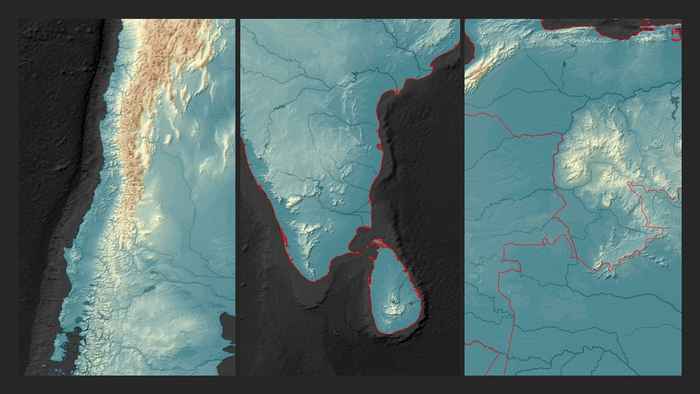Unique species in island-like systems
Are true islands and sky islands alike?
5 August 2020
Islands and island-like formations of mountains are known for the high number of ‘endemic’ species: unique species limited to only a few locations in the world. How did this concentration of endemic species come about? A new study now shows that mountains and islands went through a highly dynamic past changing much of their isolated character we see today. The high number of endemic species found is therefore the result of a dynamic past.
Sky islands
Isolated patches of habitat in mountains are found everywhere. They can be on mountain tops, or hidden in high-elevation valleys, and also groups of isolated mountains in a desert. Examples of the latter have been called ‘sky islands’ due to their island-like character and also high number of endemic species, also referred to as endemism. The question was therefore, how similar are these mountain ‘islands’ compared to true islands and how has isolation been the main driver of endemism?

‘To answer that question, we reviewed the theoretical concept of isolation and asked ourselves what it means to be isolated and what relevance it has for species in mountains and islands,’ explains Suzette Flantua, first author of the study and former researcher at the Institute for Biodiversity and Ecosystem Dynamics (University of Amsterdam, the Netherlands) and now at the Department of Biological Sciences, University of Bergen (Norway). ‘By gathering a team of researchers with strong backgrounds in mountains and islands, we saw that present-day isolation actually changed drastically over time, influencing endemism in their own way’.
The authors elaborate on the importance of understanding that islands initiated with a certain level of isolation and then endured a dynamic trajectory of shifting isolation. ‘Also, we know that islands are of course of different ages, meaning that the total duration of isolation must be an additional dimension of the isolation history an island went through’, says Kenneth Rijsdijk, Assistant Professor at the University of Amsterdam.
The present is just a snapshot in time
The study explains that the present is actually a climatic exception compared the cold conditions that dominated during the last million years. Flantua: ‘It’s often surprising how dynamic and relentless the climate fluctuations of the last million years have been for islands and mountains around the world, and how little we understand of the evolutionary consequences of these constantly shifting boundaries of islands and mountain habitats’.

Under the current warm climate conditions, many true islands are on the small end of their potential size. ‘We already knew from previous work that islands connected and disconnected numerous times in the past due to sea level fluctuations, influencing endemism in some way or the other’, says Sietze Norder, who just finished his PhD at the University of Amsterdam on island biodiversity. ‘And in many mountain islands, we actually see similar patterns of changing isolation due to changing global temperatures, but these patterns are even more complex than in true islands’.
By conceptually comparing different types of true islands and mountains, the study concludes that much insight can be gained by integrating knowledge from islands and mountains, but that their dynamic isolation history, rather than the present day isolation, influences evolution and holds the key to understand present-day endemism in these seemingly isolated systems.
Publication details
Suzette Flantua, Davnah Payne, Michael Borregaard, Carl Beierkuhnlein, Manuel Steinbauer, Stefan Dullinger, Franz Essl, Severin Irl, David Kienle, Holger Kreft, Bernd Lenzner, Sietze Norder, Kenneth Rijsdijk, Sabine Rumpf, Patrick Weigelt, Richard Field: ‘Snapshot isolation and isolation history challenge the analogy between mountains and islands used to understand endemism,’ in Global Ecology and Biogeography (July 2020). Open access. DOI: https://doi.org/10.1111/geb.13155